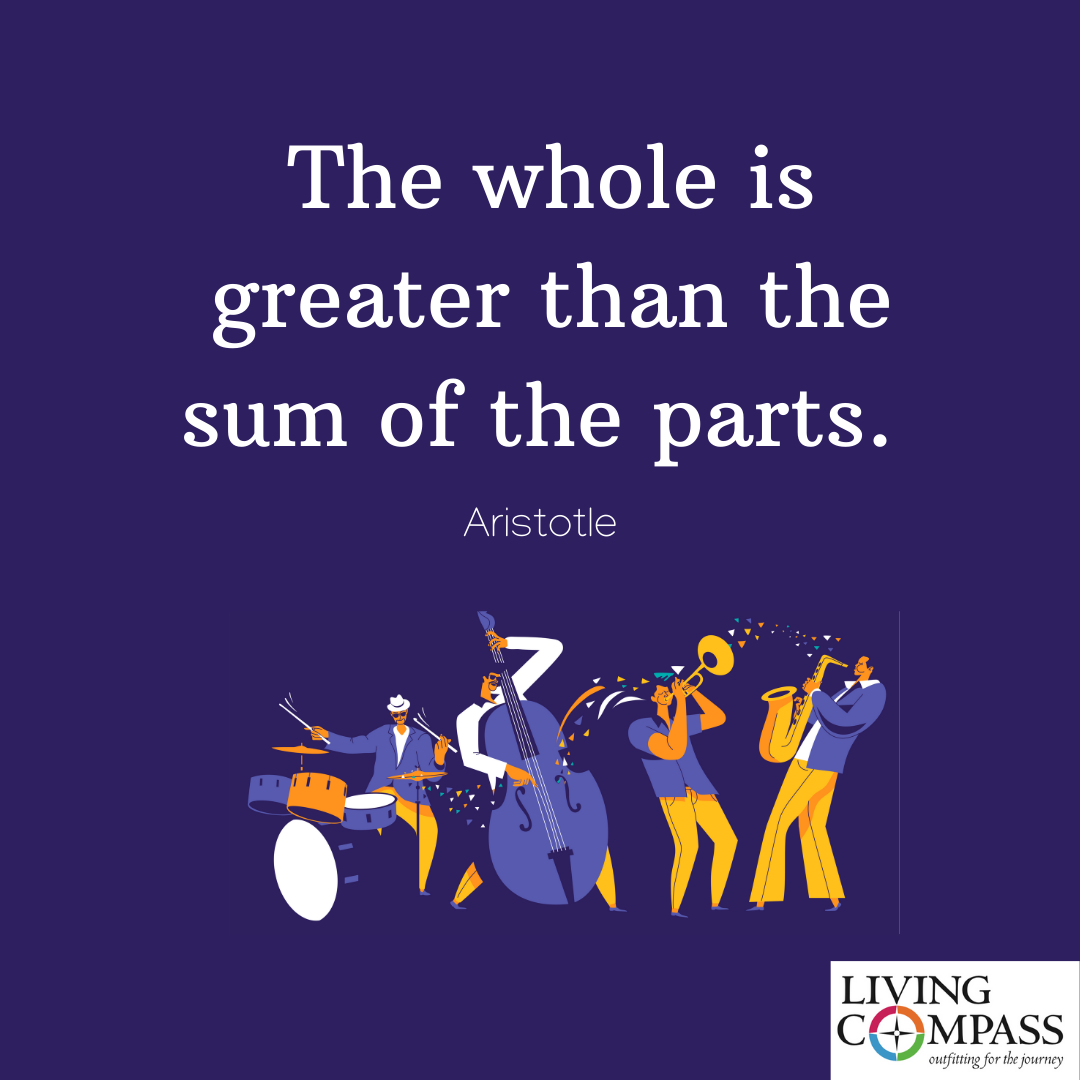Inside Out
It’s been a year since the pandemic changed all of our lives. Everyone has their own story of how hard year this year has been. There is one group that I hear from a lot and that I have special empathy for and that’s parents. Parent’s lives have been turned inside out by their kids doing school from home, day care centers being closed, and all the while often working from home or risking their health as essential workers.
The full range of emotions are on regular display as both adults and children are exhausted. And yet, like the superheroes they are, parents find a way to keep on keeping on and doing the seemingly impossible every day.
In honor of parents, for this week’s column I am sharing an excerpt from a book that my wife Holly Hughes Stoner and I wrote called the Parent Wellness Compass: Outfitting for the Journey. The reflection is entitled “Inside Out: Feeling and Expressing the Full Range of Emotions.” Even if you are not a parent, I think you will find what we write to be applicable to your own personal wellness, as well.
“Imagine your emotions existing on a continuum, or a scale from zero to ten. Think of the emotions on the bottom end of the scale, zero to five, as the difficult or unpleasant emotions, such as fear, worry, anger, and sadness. Now think of the emotions at the top end of the scale, six to ten, as the pleasurable emotions, such as joy, laughter, love, and excitement. Right in the middle, at number five, is considered the neutral point, where we don’t really feel much of anything, pleasant or unpleasant.
Here is an important insight: There is a strong connection between the degree to which we are comfortable feeling and expressing unpleasant emotions, and the degree to which we feel and express pleasurable emotions. Difficulty feeling and/or appropriately expressing unpleasant feelings usually means we will, perhaps surprisingly, have difficulty feeling and expressing positive feelings. While we know that we all have the full range of emotions, it is when we either tamp feelings down or let them explode that we get into trouble.
The best example we have of those who are comfortable expressing the full range of emotions is young children. Observe them at a playground: one moment they are shrieking with delight as they come down the slide, and the next moment they are sobbing loudly because they have fallen and skinned a knee. A moment later and we might see them angry at a child who will not share, and in another moment hugging that same child. It is easy and natural for children to live into all of their emotions.
There is a wonderful animated movie from Pixar, Inside Out, that depicts a young girl learning to handle the full range of her emotions. Eleven-year-old Riley is having a hard time when her family uproots itself from Minnesota and moves to California because of her father’s new job. Riley becomes quite sad and angry because she misses her friends, school, and hockey team back in the Midwest. Riley’s well-meaning parents don’t like seeing her upset and so they repeatedly encourage her to “focus on the positive” and try to act happy even when she is not feeling that way on the inside.
The brilliance of this film is its portrayal of Riley’s inner emotional life. Through the magic of animation, we are able to “see” inside Riley’s brain where five characters representing five emotions—Joy, Sadness, Anger, Fear, and Disgust—take turns controlling the “keyboard” of Riley’s brain. Riley’s parents want Joy to be her prominent emotion and Riley clearly wants to please her parents. So we see Joy doing everything she can to control and stifle all the other emotions, especially Sadness, so that Riley experiences only joy. Of course, this doesn’t work and, in the end, it is only when Joy accepts and welcomes the presence of Sadness that healing occurs, and Riley begins to accept, adjust, and embrace her new life.
Inside Out reminds us that all of our emotions are important and need to be heard and accepted, because all of them serve to tell us something important about our world. Our emotional well-being will be enhanced when we allow ourselves to both feel and express the full range of our emotions in healthy ways. Our sense of well-being will be diminished when we try to block or deny any of our emotions. It is important to remember that allowing the expression of all of our emotions brings openness and provides space for connectedness, healing, and growth.”
If you know a parent who could benefit from a word of encouragement right now, find a way to reach out and offer that word to them today.
If you would like to download a free PDF of The Parent Wellness Compass: Outfitting for the Journey, you can find it HERE.




